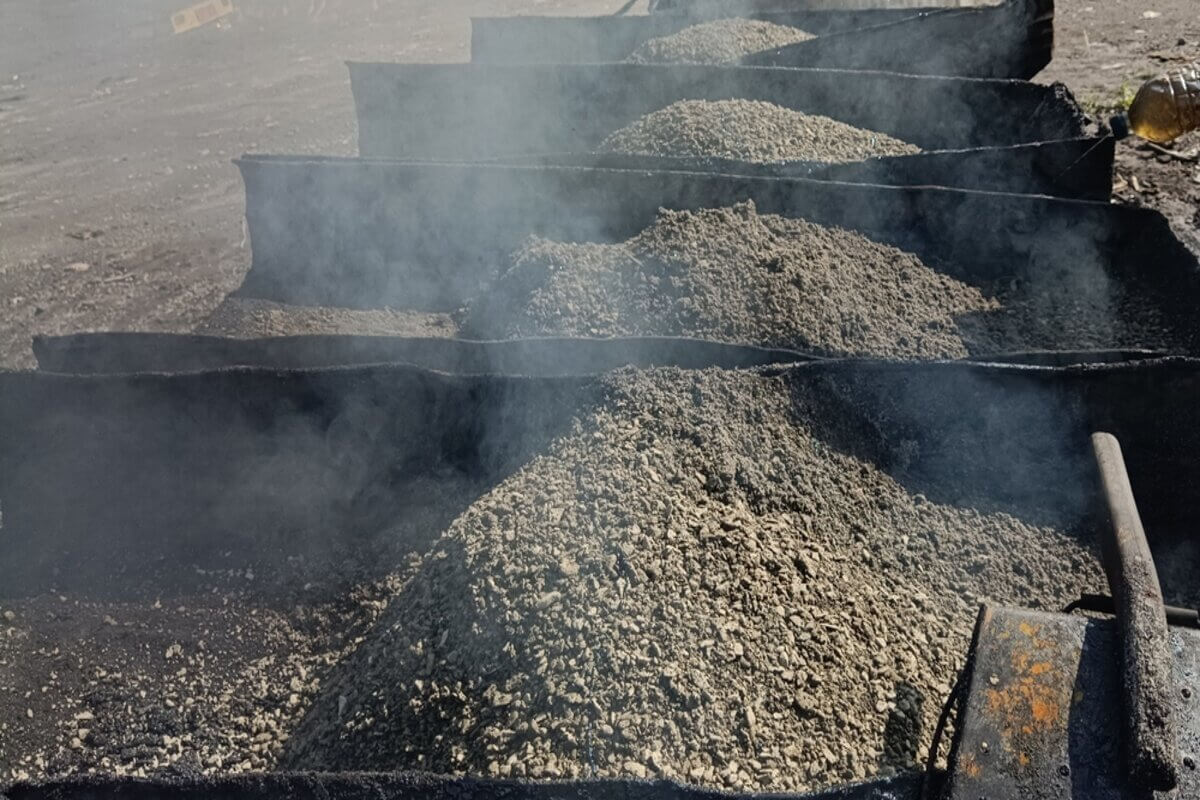Hot Mix Asphalt Paving: Redefining Business Residential Property Landscapes
Hot Mix Asphalt Paving: Redefining Business Residential Property Landscapes
Blog Article
Opening the Secrets of Warm Mix Asphalt Innovation
Exploring the depths of hot mix asphalt technology uncovers a globe where exact formulas and careful processes merge to shape our roads and framework. The blend of fillers, binders, and aggregates isn't just a building task however a tactical orchestration of durability and effectiveness. As we peer right into the complex dancing of parts, a tapestry of durability and sustainability unfolds. But what lies underneath this surface area of asphaltic proficiency, and what tricks wait to be introduced in the world of leading developments?
Value of Warm Mix Asphalt
Warm Mix Asphalt plays an essential function in modern-day infrastructure development as a result of its toughness and cost-effectiveness. As the most commonly made use of leading material for roadways, freeways, and parking area, Hot Mix Asphalt offers an array of advantages that contribute to its significance in building and construction projects. One essential advantage is its capacity to hold up against hefty web traffic loads and extreme climate conditions, giving a lasting and dependable surface for transport networks. Furthermore, Hot Mix Asphalt is cost-effective in both initial building and construction and lasting upkeep, making it a preferred option for lots of framework tasks.
The resilience of Hot Mix Asphalt stems from its composition, that includes aggregates, binder, and filler materials that are thoroughly selected and blended to fulfill details efficiency demands. This accurate combination leads to a flexible and strong sidewalk that can withstand regular use without significant wear and tear. Additionally, Hot Mix Asphalt is 100% recyclable, additional improving its sustainability and environmental advantages. In general, the significance of Warm Mix Asphalt in framework advancement can not be understated, as it remains to be a foundation of modern building and construction techniques.
Parts of Asphalt Mixes
The make-up of asphalt blends is composed of thoroughly chosen accumulations, binder, and filler products that are crucial for achieving particular efficiency demands. Accumulations are the key part of asphalt blends, providing strength and stability. The binder, usually bitumen or asphalt cement, holds the accumulations together and offers adaptability and sturdiness to the mix.
The mix and proportion of these parts play a substantial role in determining the high quality and performance of the asphalt mix. Engineers thoroughly develop the mix to meet particular demands, thinking about elements like web traffic volume, climate problems, and sidewalk life expectancy. Appropriate selection and harmonizing of accumulations, binder, and fillers are important for creating durable, long-lasting asphalt sidewalks.
Combining and Production Techniques

When the accumulations are chosen, the binder, commonly asphalt concrete, is included to bind the products together. The binder's high quality and quantity considerably impact the mix's resistance, stamina, and versatility to ecological aspects. In addition, fillers like hydrated lime or Portland concrete might be integrated to improve specific characteristics of the asphalt mix, such as its workability or dampness resistance.
Throughout production, the aggregates and binder are heated, typically in between 250-325 ° F(121-163 ° C ), to promote mixing and guarantee proper coating of the accumulations. The mixing process has to be comprehensive to achieve an uniform blend that promotes the wanted efficiency characteristics of the asphalt. Numerous methods, such as set blending or drum mixing, are used to accomplish consistent and high-grade asphalt blends for construction jobs.
Factors Influencing Asphalt Performance
Elements affecting asphalt efficiency incorporate a range of variables that click now affect the longevity, longevity, and general top quality of asphalt pavements. One essential element is the high quality of materials made use of in the asphalt mix.

Layout considerations, such as pavement density and water drainage, are important in making sure the lasting performance of the asphalt sidewalk. By meticulously taking into consideration these professionals, designers and aspects can maximize asphalt efficiency and enhance the service life of sidewalks.
Sustainable Practices in Asphalt Modern Technology

Furthermore, the advancement of warm-mix asphalt (WMA) modern technologies has actually obtained traction over the last few years. WMA permits the manufacturing and placement of asphalt mixes at lower temperatures compared to standard hot-mix asphalt, leading to minimized power intake and greenhouse gas exhausts. The use of permeable asphalt blends can aid mitigate stormwater drainage issues by enabling water to penetrate with the pavement and into the ground, advertising natural water filtration and reenergize processes. By applying these sustainable practices, the asphalt market can add to constructing a more durable and ecologically friendly facilities network.
Final Thought
In verdict, hot mix asphalt modern technology plays an important function in contemporary framework advancement as a result of its sturdiness and cost-effectiveness. By very carefully balancing elements, using proper mixing techniques, and considering numerous factors, engineers can develop top notch asphalt blends that hold up against rush hour lots and extreme weather. Accepting sustainable practices, such as using recycled products and warm-mix innovations, even more enhances the ecological kindness of asphalt modern technology.
Mixing and production strategies Discover More in warm mix asphalt technology include the precise mix and processing of aggregates, binder, and fillers to produce a durable and high-performance asphalt mix.Aspects affecting asphalt efficiency incorporate a range of variables that affect the longevity, durability, and general top quality of asphalt sidewalks. Sustainable methods in asphalt technology include different initiatives intended at minimizing the ecological impact of asphalt production and paving processes. By integrating recovered asphalt pavement (RAP) and recycled asphalt shingles (RAS) right into new asphalt mixes, the industry can substantially lower the intake of raw products and energy, while likewise reducing landfill waste.
WMA allows for the manufacturing and placement of asphalt blends at lower temperatures compared to conventional hot-mix asphalt, resulting in reduced energy intake and greenhouse gas exhausts.
Report this page